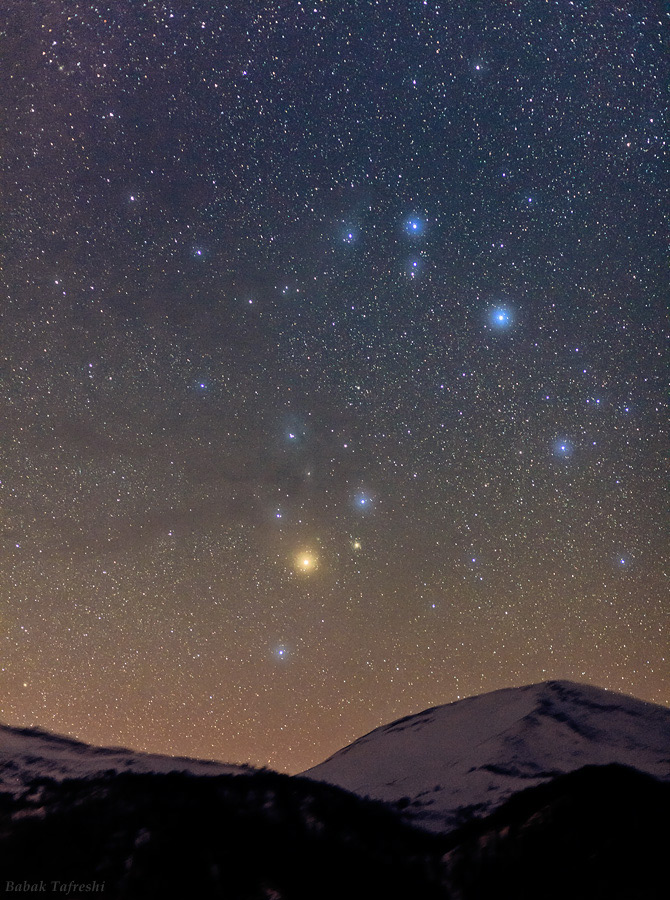Astronomers Map Atmosphere of Dying Supergiant Antares

One day, our sun will become a red giant, growing so large that it will swallow Earth. That hasn't yet happened, of course, which is fortunate for us on Earth. However, it means scientists must look beyond the solar system to study the full evolutionary cycles of stars and their mechanisms at each stage.
A new study led by Keiichi Ohnaka, a researcher at Catholic University of the North in Chile, sought to understand how the distant red supergiant star Antares manages to expel so much matter off its surface as it nears the end of its life and nears its finale as a spectacular supernova.
The study demonstrated improved techniques for discovering what could be behind atmospheric motion on Antares, while showing that there are still mysteries surrounding what, exactly, causes the star's turbulent churning.
"With this study, we can open a new window to observe stars other than the sun … in a similar way that we observe the sun," Ohnaka told Space.com. "We can then apply this technique to investigate other problems — not only supergiants, like Antares, but also other types of stars and other unsolved problems." [Supernova Photos: Great Images of Star Explosions]
Antares is a red supergiant star, and its large size makes it an ideal candidate for study from Earth. The star is so bright that it was given its name to mean "anti-Ares," likely because its reddish color seemed to oppose that of the shiny planet Mars, named after Ares, the ancient Greek god of war. Because it is so large, Antares is an ideal first subject for scientists to study to gain a better understanding of how stars other than Earth's sun manage to exist and function. Indeed, Antares' diameter is estimated to be 883 times larger than that of the sun. Antares is also known as Alpha Scorpii, meaning it's the brightest star in the constellation Scorpius. The red star is visible in the August night sky.
How can astronomers study distant stars? They certainly cannot travel there with today's technology: A spacecraft flying at the speed of light would take 600 years to arrive at Antares. Ohnaka's group used the European Southern Observatory's Very Large Telescope Interferometer (VLTI) in Cerro Paranal, Chile, to observe the motion of the carbon monoxide gas in Antares' atmosphere.
Until now, scientists have relied on optical and ultraviolet spectroscopy to understand stars, which means they look at light to analyze the chemical compositions of stars. That method is also used to study the sun, but has its limitations. For example, though it can indicate what a star is made of, it cannot show the mechanics of atmospheric gas movement, which could answer questions about what processes Antares experiences. The use of interferometry allows Ohnaka to capture more precise images of the outer parts of distant Antares' atmosphere, down to very small measurements of angles known as milliarseconds. According to Ohnaka, the observations his group made with VLTI's multiple telescopes over the course of five nights in April 2014 were combined to paint a detailed picture of how the gas in Antares' outer atmosphere was moving.
Breaking space news, the latest updates on rocket launches, skywatching events and more!
Ohnaka's technical use of VLTI is an important preliminary step in understanding the end stages of stars, according to John Monnier, an astronomer at the University of Michigan who was not involved in the study.
"Before, we just saw the temperature of the surface of the star, and how it may be different on one part or another part," Monnier told Space.com. "But this really gives you velocity, the speed of that surface as it's coming towards or away from you."
"That has never been done before on a surface of a star," Monnier added. "This is kind of a pioneering dataset to be able to do that."
The next step in the research could be to create animations integrating all of the high-resolution imagery taken of Antares, Monnier said. That would help illuminate the star's motions, and perhaps one day reveal the source of the churning convection that raises materials up to the outer atmosphere and is behind the death of red supergiant stars.
The new work was detailed Aug. 16 in the journal Nature.
Follow Doris Elin Salazar on Twitter @salazar_elin. Follow us @Spacedotcom, Facebook and Google+. Original article on Space.com.

Doris is a science journalist and Space.com contributor. She received a B.A. in Sociology and Communications at Fordham University in New York City. Her first work was published in collaboration with London Mining Network, where her love of science writing was born. Her passion for astronomy started as a kid when she helped her sister build a model solar system in the Bronx. She got her first shot at astronomy writing as a Space.com editorial intern and continues to write about all things cosmic for the website. Doris has also written about microscopic plant life for Scientific American’s website and about whale calls for their print magazine. She has also written about ancient humans for Inverse, with stories ranging from how to recreate Pompeii’s cuisine to how to map the Polynesian expansion through genomics. She currently shares her home with two rabbits. Follow her on twitter at @salazar_elin.
